Pruning and trimming are both services that remove unwanted limbs from trees, however, tree pruning and trimming are two things.
Although the two activities are very close to each other and many people may confuse them, they are not the same.
Tree pruning is the selective removal of branches for the overall health and vigor of the tree whereas tree trimming is more for the shape and functionality of a tree in its environment.
There are a few more key differences that are outlined below.
Pruning and trimming are two activities that are all done to improve landscaping. They are considered similar since they involve cutting off parts of a plant to improve it.
Pruning is a selective process that is done to take care of a plan and improve its overall health. It is done by cutting or removing branches, buds, twigs, or even roots to allow the plant to improve its health. For pruning, you do it when some parts of the plan are either infected or dying hence preventing them from ruining the plant or trees’ health.
Pruning can be done by use of hand to pick the buds, stems, or leaves one by one. The use of a simple tool is also possible.
Trimming is a more general activity that is done to improve the shape of the trees or plants. When trimming, the process mostly focuses on the appearance, shape, and structure of the plant.
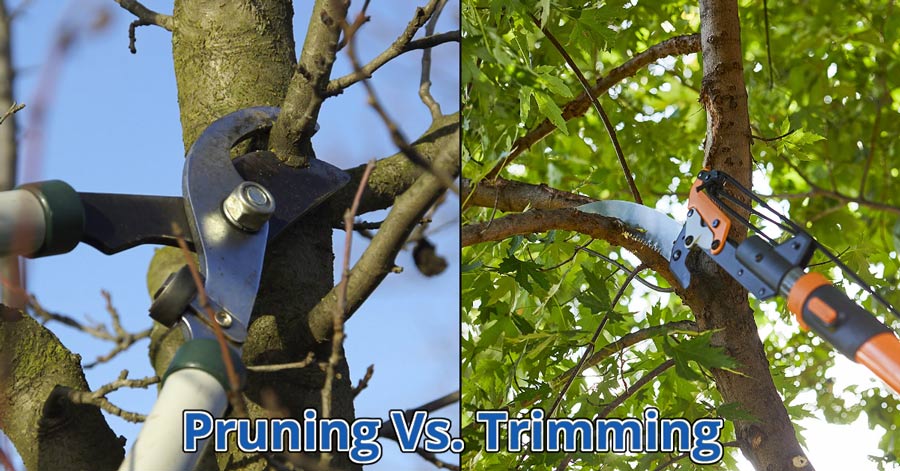
Why do you prune?
Pruning is done to generally improve the health and improve the growth of a shrub, plant, or tree. It is an activity that is done whenever you realize that the health and growth or life of the plant is endangered.
Here are the reasons why you need to prune.
- When a shrub, plant, or tree is damaged, sick or diseased.
- Improve the health of the shrub by cutting old parts.
- To eliminate a dying part of a plant to facilitate new growth.
Changing the physical behavior of a part of a shrub by cutting an entire area or just a small part.
Before pruning makes sure that you identify the areas that you need to get rid of and exactly what you need to use to prune them.
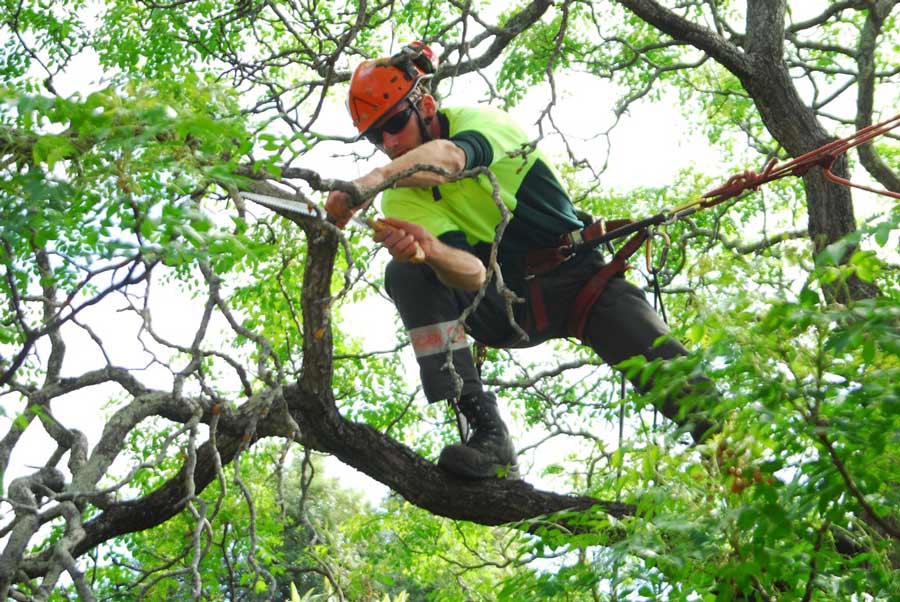
What are the different types of pruning?
There are a few types of pruning that are done on shrubs, and trees. They include the following.
Deadwooding
Just as the name suggests, it is an activity that is done to remove any dead or decaying branches on the shrub. When doing deadwooding you have to make sure that you focus on either dead, dying, or decaying parts of the trees that can affect their health.
Since this type of pruning is meant to improve the growth and health of the trees, you have to do regular pruning to keep them safe and healthy. It is a simple process especially done on shrubs and other short plants. You can use your hand or simple tools to prune.
Canopy lift
The is the process of removing the lower branches of a tree. This is generally done in the early years of the growth of a tree and it is essential to improve the look of the tree and allow more light to your home or lawn.
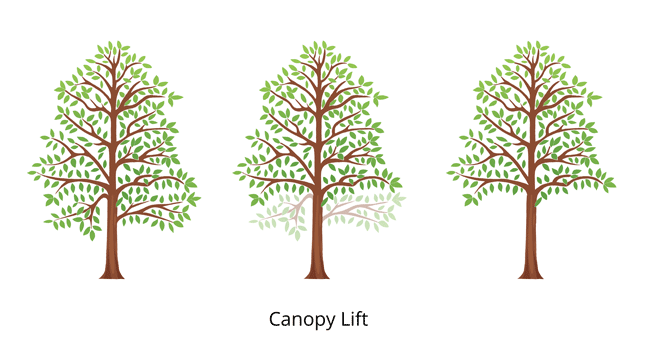
Crown thinning
It is done to restore the health status of a crown. The process is done by removing 3rd and 4th order branches to allow more light and more airflow. This will reduce fungus growth and improve light penetration to your home or lawn below.
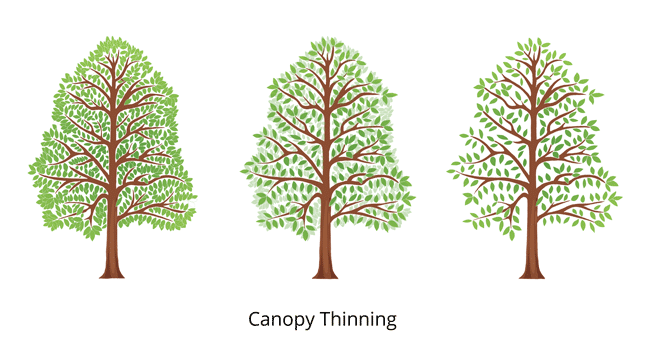





When should trees be trimmed?
Different types of trees may require different attention when it comes to trimming. Tree species may matter as well.
However, trees should be trimmed twice every year. This is done for the purpose of maintaining the aesthetics of the trees. The time for trimming is highly dependent on the type of tree.
As long as you do it twice a year, it is okay as long as you make sure that one of them is after the flowering season. It is that they will improve their health.
Small shrubs should be trimmed before reaching one-foot height as it will optimize their health.
Does pruning promote growth?
Yes. Pruning is good for trees and promotes growth. Before pruning you will find out there are many dead, and decaying parts of a tree that are preventing further growth of other connected parts.
Dead parts of a tree or a shrub can also block other parts from accessing light since they are no longer growing. Cutting them gives more light.
Pest and disease-infected parts of a tree also slow down the growth. By cutting them will allow full-scale growth.
Who should I call for tree pruning?
You are best getting in touch with a local tree cutting service specialist.
GoTreeQuotes is a FREE service that matches you with the best-priced and top-voted local services.
Simply fill in your Zip Code at the very top of the bottom of the page and answer a few quick questions.
We then match you with expert pros. You then compare quotes and choose the best one.
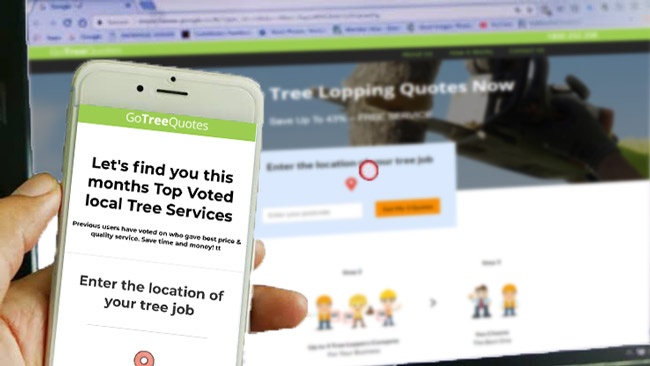
What about trimming?
Trimming is also an equally crucial activity when it comes to landscape services and taking care of your trees or shrubs. The process should be done with a lot of care especially when you have overgrown trees and shrubs.
As a result, there is a need for getting professionals to help you with the trimming process as well. In cases where you need to have special shapes on your trees or shrubs, professionals will help a lot.
In trimming you may also have overgrown trees whose height is difficult to reach. Others are close to rivers, lakes, or power lines where it is dangerous to do on your own. Professionals also have good equipment that can be used on any type of trimming making them a good option.
FAQ's
As a general rule of thumb, trees should be trimmed in winter. The reason for this is mainly to do with the health of the tree. Trees are dormant in winter so removing limbs will be less of a shock to their system. Pests like boring beetles or fungal infections like Oak wilt are also less prevalent in winter which gives your tree time to heal before summer hits.
If the tree is on our property you will need to pay for it to be trimmed. If it is a rental property, you might be able to get the owner to pay for it, but you would need to ask them before going ahead. If the tree is growing into the roof or fences, they will not have a problem with paying for the trim.
Normally tree trimming is best done in winter, but if it’s only a small prune (less than 10% of foliage) then pruning in spring should be fine. Obviously, emergency trimming jobs such as building clearance, broken branch clean-ups are also fine.
It is possible for a tree to die from trimming, but if done correctly, tree trimming is very beneficial for the tree’s overall health. If the trimming is done by a trained arborist at the right time of year, then your tree will respond will beautiful luscious foliage, more flowers, fruit, and a much healthier look. If done incorrectly you can put a lot of strain on the tree and slowly deteriorate its health.
If your tree is hanging over your neighbor’s yard they are well within their rights to trim your tree, just as long as they are not breaking any tree audience laws in the process. It’s the norm for them to ask your permission first before pruning, but it is not against the law as it is encroaching on their property.
Hedge trimming is priced a little differently from regular tree trimming. The factors to consider are the height of the hedge, the length, and the state of growth. The following prices are for hedges that are regularly pruning and no more than 3 – 4 inches of growth are needed to be removed. Small hedge 3 – 6 ft. (height) will cost $100 for the first meter (length) and $50 for every additional meter. Medium hedges 6 – 9 ft. (height) will cost $140 for the first meter (length) and $70 for every additional meter. Large hedges 9 – 12 ft. (height) will cost $210 for the first meter (length) and $100 for every additional meter.






